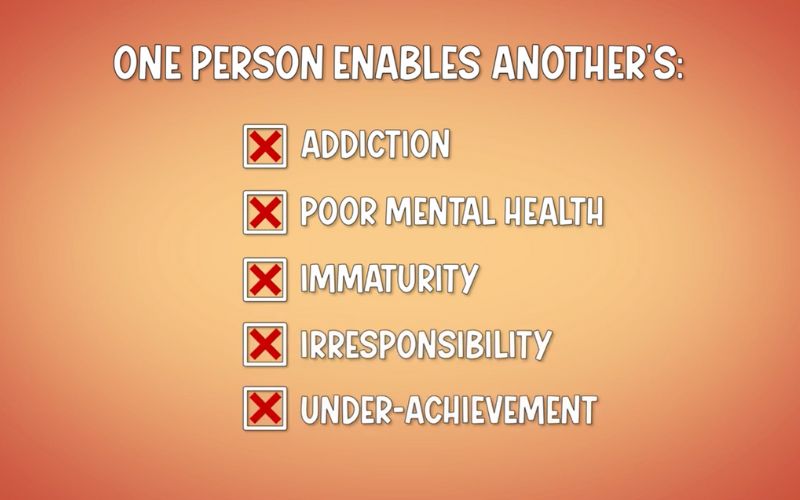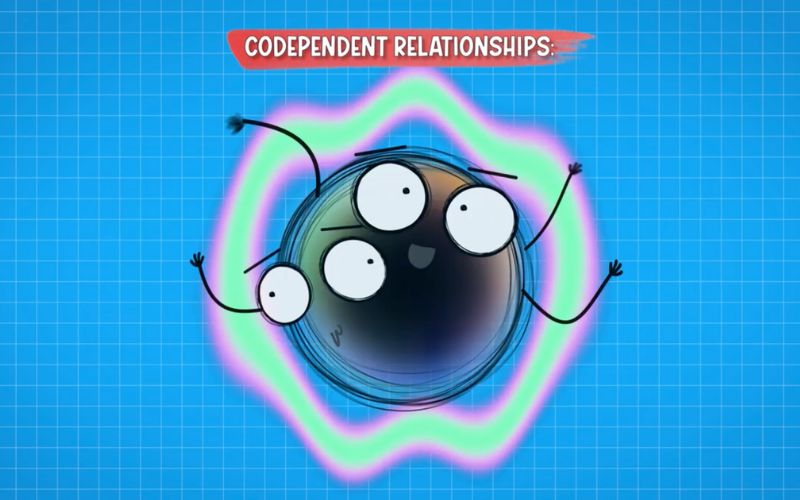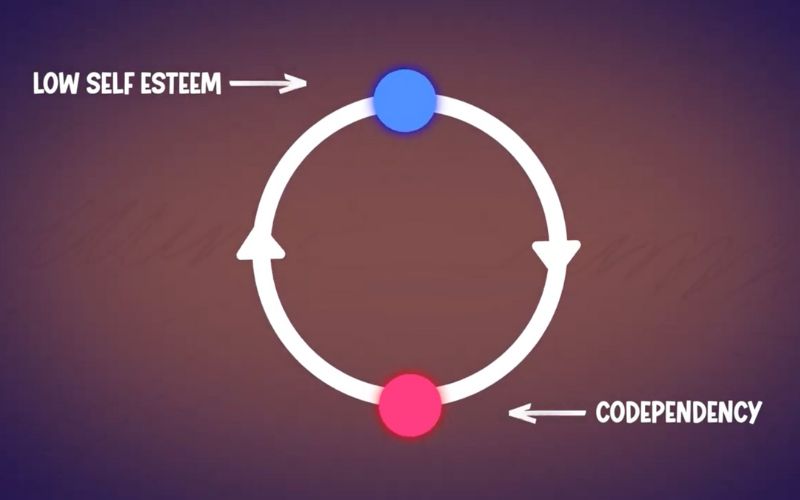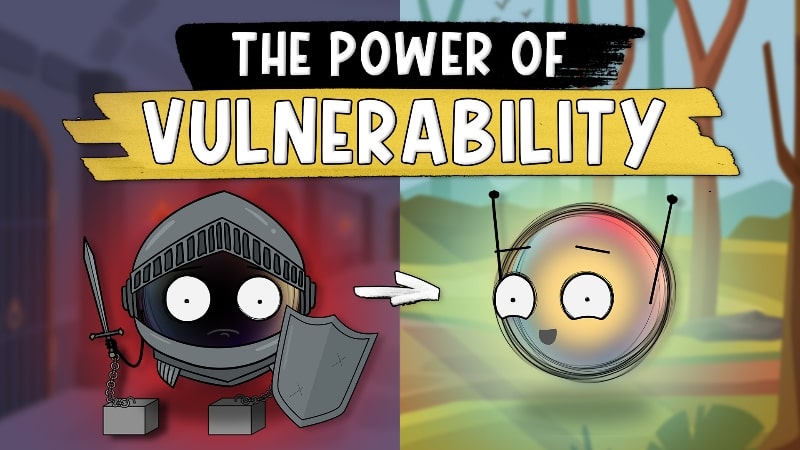In a world where connection is both celebrated and commodified, it’s easy to mistake intense attachment for love.
But what if that deep need for closeness isn’t just passion or dedication, but a sign of something more complex?
Enter codependency – a term that’s gained traction in recent years, yet remains widely misunderstood.
Codependency is a hidden epidemic that has the power to destroy our relationships and our sense of self-worth.
And I’m not just talking about romantic relationships here. This can also affect our relationships with family members, friends, and even colleagues.
In this article, we’ll cover what codependency is and how you can recognize codependent behavior in yourself and others.
These markers go beyond simple clinginess or a desire for closeness. They reveal the complex ways codependency can manifest, affecting your emotional well-being, self-esteem, and ability to form healthy connections.
By understanding these signs of codependency, you’ll be better equipped to recognize codependent patterns in your own life and take steps towards healthier, more balanced relationships.
This post may contain affiliate links from our partners and we may receive a commission if you purchase through these links. This helps support our channel at no additional cost to you. We appreciate your support! 🫶🏼
What is Codependency?
Codependency isn’t simply being clingy or needing reassurance from time to time. It’s a nuanced psychological concept that describes a dysfunctional pattern of behavior in relationships.
Originally coined in the context of families dealing with substance abuse, the term has since expanded to encompass a wider range of relationship dynamics.
At its core, codependency involves an excessive emotional or psychological reliance on a partner, often at the expense of one’s own needs and well-being.
It’s characterized by a compulsive need to care for, control, or “rescue” another person, typically to the detriment of both individuals involved.
It’s like being emotionally handcuffed to someone else’s well-being.
Melody Beattie, in her book “Codependent No More,” describes it as a behavioral condition in a relationship where one person enables another person’s addiction, poor mental health, immaturity, irresponsibility, or under-achievement.

Yikes…
While a codependent person might appear selfless and devoted, their actions often stem from deep-seated insecurities and a fragile sense of self.
In a healthy relationship, both partners maintain their individuality while supporting each other. They have clear boundaries, communicate openly, and find fulfillment both within and outside the relationship.
A codependent relationship, also called an interdependent relationship, on the other hand, blurs these lines, creating an unhealthy fusion of identities and needs.
7 Signs of Codependency
These signs of codependency don’t definitively mean that you are a codependent person or in a codependent relationship, but they are signs to watch out for.
1. Poor Boundaries
Boundaries are the invisible lines that define where you end and another person begins. They’re crucial for maintaining a sense of self, personal autonomy, and healthy relationships.
However, for the codependent person, boundaries often become blurred or nonexistent, leading to a host of relational and personal issues.

In codependent relationships, poor boundaries manifest in various ways:
- Difficulty saying “no” to others’ requests
- Taking on others’ problems as your own
- Feeling responsible for others’ emotions
- Neglecting personal needs to meet others’ demands
- Accepting disrespectful or abusive behavior
This lack of boundaries often stems from a deep-seated fear of abandonment or rejection.
Codependents often believe that maintaining separate identities or needs will threaten the relationship.
The impact also extends beyond immediate relationships. Without clear limits, codependents often struggle with their sense of identity, leading to chronic people-pleasing and difficulty in decision-making.
Addressing boundary issues is crucial for overcoming codependency. It involves: learning to differentiate between your responsibilities and others’, understanding your right to personal limits, and developing the courage to express and maintain those boundaries.
2. Control Issues
Control is a paradoxical aspect of codependency. While codependents often feel powerless in their relationships, they frequently engage in controlling behaviors, often without realizing it.
Key manifestations of control issues in codependency include:
- Micromanaging others’ lives or decisions
- Offering unsolicited advice or “help”
- Manipulating situations to avoid abandonment
- Trying to “fix” or change partners
- Becoming anxious when things don’t go as planned
These behaviors typically stem from deep-seated anxiety, low self-esteem, fear, and past trauma.
People in codependent relationships may believe that if they can control their environment and the people in it, they can prevent pain, rejection, or abandonment.
For example, a codependent partner might constantly check their partner’s phone, justifying it as “caring” or insist on managing all household finances, claiming her partner is “bad with money.”
The need for control often backfires, creating tension and resentment in relationships. It can push away the very people the codependent is trying to keep close.
Learning to tolerate uncertainty and focus on self-management rather than other-management is key to breaking this pattern.
3. Constantly Seeking Reassurance
“Do you still love me?” “Did I do okay?” “Are you mad at me?”

If these questions dominate your conversations, you might be grappling with a key sign of codependency: an insatiable need for reassurance.
Codependents often seek constant reassurance from others as a means of validation, relying on external approval rather than cultivating their own sense of self-worth.
This insecurity can stem from childhood experiences, past traumas, or long-standing relationship patterns.
It puts strain on relationships, erodes self-esteem, and increases anxiety.
Breaking free from this pattern isn’t easy, but it’s crucial for healthier relationships and personal growth. Here are some strategies that can help:
- Practice self-validation: Learn to acknowledge your own feelings and experiences without external confirmation.
- Challenge negative self-talk: Identify and question the thoughts that drive you to seek reassurance.
- Develop mindfulness: Stay present in the moment instead of worrying about relationship status or personal worth.
- Build self-esteem: Engage in activities that make you feel competent and valued independently of others.
Remember, seeking professional help can be invaluable in addressing this aspect of codependency. A therapist can provide tools and support as you work to build a stronger sense of self and more balanced relationships.
4. Conflict Avoidance
Conflict avoidance is a hallmark of codependency. Those struggling with this issue often prioritize keeping the peace over addressing problems, even at great personal cost.
The conflict-avoidant codependent:
- Agrees to things they don’t want to do
- Stays silent about their own needs and desires
- Walks on eggshells to prevent arguments
- Internalizes frustrations rather than expressing them
- Feels intense anxiety at the mere thought of confrontation
While conflict avoidance might seem harmless, its effects can be damaging. Resentment builds, communication breaks down, and boundaries erode. The result is often an imbalanced relationship that satisfies neither party.
Learning to handle conflict in a codependent relationship, or any relationship for that matter, is important. It involves recognizing the value of constructive disagreements, learning to express needs assertively, and developing conflict-resolution skills.
Starting small, using “I” statements, and setting clear boundaries can help. Many find therapy beneficial in addressing these deeply ingrained patterns.
5. Excessive Caretaking
Being a caring and kind person is a great quality in any relationship, but having a compulsive need to rescue and take responsibility for others – not so much.
Codependents tend to put others’ needs and problems before their own so often that they neglect their own self-care in the process.

It’s like being a superhero, but one who forgets they need to charge their own batteries every once in a while, which leads to burnout.
Codependent tendencies in this area include:
- Anticipating and fulfilling others’ needs without being asked
- Neglecting their own physical and emotional health to care for others
- Feeling guilty when taking time for themselves
- Enabling destructive behaviors in loved ones
- Struggling to receive care or support from others
This pattern often originates in childhood, where they may have been parentified or tasked with managing the dysfunctional needs of other family members.
In a codependent relationship, one partner might exhaust themselves by caring for their alcoholic partner, making excuses for their behavior, and cleaning up their messes. Their identity is so wrapped up in being the caretaker that they don’t know who they are without this role.
While genuine care for others is admirable, excessive caretaking creates an unhealthy dynamic. It can foster dependency, prevent others from taking responsibility for their actions, and lead to burnout and resentment in the caretaker.
Setting healthy boundaries and recognizing the difference between helping and enabling can help to break this cycle. It’s also important to develop a sense of identity separate from the caretaking role.
6. Disconnect With Your Own Emotions

For many codependents, navigating their own emotional landscape can feel like wandering in a foreign country without a map.
This emotional disconnect is often one of the most overlooked signs of codependency, often overshadowed by more visible behaviors.
At its core, this disconnect manifests as:
- Difficulty identifying or naming one’s own feelings
- Tendency to focus on others’ emotions while ignoring one’s own mental health
- Feeling numb or emotionally “flat” much of the time
- Experiencing sudden, overwhelming emotional outbursts
- Relying on others to gauge how one should feel in a situation
This emotional estrangement often has roots in childhood. Many codependents grew up in environments where their feelings were dismissed, punished, or simply not acknowledged.
As a result, they learned to suppress their emotions as a survival mechanism.
The consequences of this emotional disconnect can be far-reaching:
- Difficulty making decisions that align with one’s true desires
- Increased vulnerability to manipulation or abusive relationships
- Challenges in forming genuine intimate connections
- A pervasive sense of emptiness or lack of authenticity
Reconnecting with one’s emotions is a critical step in transforming a codependent relationship. Practicing mindfulness, journaling, and seeking therapy can help to increase emotional awareness.
7. Low Self-Esteem
At the core of codependency often lies a foundation of sand—unstable, shifting, and easily eroded. This isn’t just a minor confidence issue; it’s a fundamental belief in one’s lack of worth that permeates every aspect of life.
Everything we’ve covered so far, the poor boundaries, control issues, need for external validation, disconnect with emotions… All of these habits create an environment full of fear and uncertainty, which is a breeding ground for self-doubt and low self-worth.
It’s a vicious cycle: low self-esteem fuels codependent behaviors, which in turn reinforce the low self-esteem.

It’s like being stuck on an emotional merry-go-round that you can’t seem to hop off of.
Codependents with low self-esteem typically:
- Struggle to accept compliments or praise
- Constantly compare themselves unfavorably to others
- Have difficulty making decisions without seeking others’ approval
- Engage in negative self-talk and harsh self-criticism
- Fear rejection and abandonment intensely
This pervasive sense of unworthiness often has roots in childhood experiences of neglect and criticism. This kind of trauma instills the belief of never being good enough.
These messages, internalized early, become the lens through which codependents view themselves and the world.
Breaking free from this cycle is a journey to self-worth. It involves challenging your inner critic and replacing thoughts of “I’m worthless” with “I have unique value to offer.” Practicing self-compassion is also key to improving your independence and mental health.
Remember: Your worth isn’t measured by your usefulness to others or your relationship status. You are inherently valuable, simply because you exist.
FAQs About Codependency
What are the 5 core symptoms of codependency?
Five core symptoms of codependency are:
- Neglecting Your Own Needs: Prioritizing others’ needs over your own.
- No or Few Boundaries: Difficulty setting and maintaining personal boundaries.
- Low Self-Worth: Feeling unworthy or inadequate.
- Control Issues: Attempting to manage or influence others’ behaviors and decisions.
- Conflict Avoidance: Suppressing personal feelings and avoiding confrontation to maintain peace.
What is a codependent person like?
A codependent person often exhibits behaviors such as excessive caretaking, low self-esteem, and a need for control. They may prioritize others’ needs over their own, struggle with setting boundaries, and seek constant validation. This person often feels responsible for others’ happiness and may have difficulty recognizing and expressing their own emotions.
What does unhealthy codependency look like?
Unhealthy codependency involves specific behavior patterns like excessive self-sacrifice, controlling tendencies, and a deep-seated need for approval. It often leads to neglecting one’s own needs, difficulty setting boundaries, and an unhealthy reliance on others for self-worth. This dynamic can result in emotional distress, relationship imbalances, and a loss of individuality.
How do you know if you’ve become codependent?
Signs of codependency include:
- You struggle to say “no” to others’ requests.
- Your mood depends heavily on others’ approval or behavior.
- You often neglect your own needs to care for others.
- You have difficulty identifying your own feelings and desires.
- You feel responsible for solving others’ problems.
- You stay in unhealthy relationships out of fear of being alone.
- You have a strong need to control people and situations around you.
Conclusion
Recognizing the signs of codependency is the first step towards building healthier, more balanced relationships.
The seven signs we’ve explored—poor boundaries, control issues, constant reassurance-seeking, conflict avoidance, excessive caretaking, emotional disconnect, and low self-esteem—are not just individual issues, but interconnected threads in the complex tapestry of codependent relationships.
It’s important to remember that codependent tendencies often develop as coping mechanisms in response to challenging life experiences. While these behaviors may have served a purpose in the past, they can become harmful when carried into adult relationships.
If you’ve recognized some of these signs in yourself, know that you’re not alone. Many people struggle with codependent tendencies, but change is possible.
The journey to overcome codependency starts with self-awareness and a willingness to prioritize your own well-being.
Resources for Help
Recognizing codependent tendencies is an important first step, but you don’t have to navigate this journey alone. Here are some valuable resources to support you in addressing codependency:
Books
- Codependent No More by Melody Beattie
- Facing Codependence by Pia Mellody
- You’re Not Crazy–You’re Codependent by Jeanette Elisabeth Menter
Support Groups
- Co-Dependents Anonymous (CoDA): A 12-step program for people seeking healthy relationships. Find local meetings at coda.org.
- Adult Children of Alcoholics (ACA): Supports those who grew up in dysfunctional homes with substance abuse. Visit adultchildren.org for more information.
Online Resources
- Mental Health America: Offers screening tools and information on codependency.
- PsychCentral: Provides articles and forums on codependency and related issues.
Professional Help
- Individual therapy with a mental health professional experienced in treating codependency.
- Look for therapists specializing in Cognitive Behavioral Therapy (CBT) or Psychodynamic Therapy.
Remember, seeking help is a sign of strength, not weakness. Whether you choose to read a book, join a support group, or start therapy, taking action towards addressing codependency is a courageous step towards healthier relationships and a more fulfilling life.
Did any of these signs of codependency resonate with you or someone you know? Let me know in the comments.

